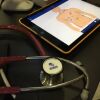The Drone, UAV or UAS (unmanned aerial vehicle, or unmanned aerial system) has become an essential piece of military technology. It could also offer great benefits to public safety. The obvious uses are Police and Border patrol, but new smaller models could make a huge difference in a big fire or during a disaster response.
In every scenario we are trained to verbalize, “Scene Safe, BSI.” I’m not sure if this is a prayer or affirmation. When you can’t see the work environment from a safe distanc, you are automatically in the danger zone. Wouldn’t it be wonderful if you could see exactly what you are getting into before you are in personal danger?
Most have heard about the Predator or Reaper UAV’s. These aircraft have 115 to 950 horsepower and wingspans of 48 to 66 feet. They cost a lot of money and require an airfield. They are probably overkill for the more limited mission profile of civilian first responders.
Smaller UAV’s are much more flexibly deployed and are likely to be more useful to Fire & EMS. One example is the Draganflyer UAV. The Draganflyer X6 helicopter is a professional quality aerial platform delivering high quality aerial photography and video. The aircraft is reliable, because it’s constructed using high quality carbon fiber and injection-molded components.
The aircraft is battery powered and very compact. It’s only 36 inches wide and 33.5 inches long. The whole system fits into a big, wheeled ruggedized case. They are fairly inexpensive and fast to deploy. I have even seen one for sale on eBay.
During an active shooter event, it could help EMS providers locate where the most viable victims are located. EMS could literally do triage from half a block away. On a large campus, a UAV could image the entire scene in only a few minutes.
At a fire scene, the Draganflyer can quickly fly to otherwise inaccessible places to look for trapped victims. At a HAZMAT scene, the responders could remain at a safe distance and examine the scene first.
It is limited by line-of-sight controls, much like any other remote controlled model aircraft. This does make it easier to learn to fly. They train pilots in only two days.
A similar multi-rotor compact UAV is the Qube, recently reviewed on EMSWorld. It is built by Monrovia, California-based AeroVironment. The Qube is a 5 1/2-pound, four-rotor drone that can be equipped with color and infrared cameras.
The ScanEagle and Integrator aircraft are bigger and can be controlled at a distance by GPS and camera. They are more like the Predator, but small enough to be launched and landed without a runway.
Both are made by Insitu Systems. You can deploy them from a trailer-based launcher and recover them with a “Skyhook,” or suspended rope and arm that you fly the UAV into at low speed. It snags the wing for safe retrieval anywhere.
ScanEagle can remain aloft on station for more than 24 hours. It flies in extreme environments carrying an electro-optic or infrared imager in a gyro-stabilized turret. It can be re-configured quickly in the field with a variety of options, from an infrared imager to custom communications relay payloads.
Imagine if a ScanEagle had been available during Hurricane Katrina. It could permit the clever separation of Search from Rescue. It could be in the air early and look for stranded rooftop victims. Then larger passenger helicopters would not be risking lives and wasting fuel looking for people.
You could first fly the UAV to search for those most needing immediate evacuation, and then the rescue helicopters would fly straight to their next high priority victim.
It looks like FEMA or municipalities can contract with these organizations to put a team on the ground in 24 hours. This could be an ideal way to affordably have “eyes in the sky” available during an MCI or disaster.
The two big hurdles to wider domestic use of UAV’s are regulation, acceptance, and pilot training. The FAA is currently working out regulation to allow civilian use of UAV’s in the USA.
The next challenge is acceptance. Some states are already proposing regulations to ban UAV’s. In my state of Missouri, they are concerned about surveillance and privacy, so they are trying to ban UAV’s, perhaps without a full appreciation for their potential value. Oregon is looking at doing the same thing.
The last hurdle is pilot training. Larger camera-controlled beyond line of sight aircraft require proper training. K-State has created a 9-hour program to do just that. It does require first having a pilots license.
Kelsey McIlroy recently wrote an excellent article about UAV’s and First Responders. He points out the valuable attributes this technology can offer civilian agencies. The UAV could be extremely valuable during floods, fires, earthquakes, and other common disaster scenarios.
The questions that remain are two-fold: How can domestic responders afford them and will government allow their use? I think they could save lives.













